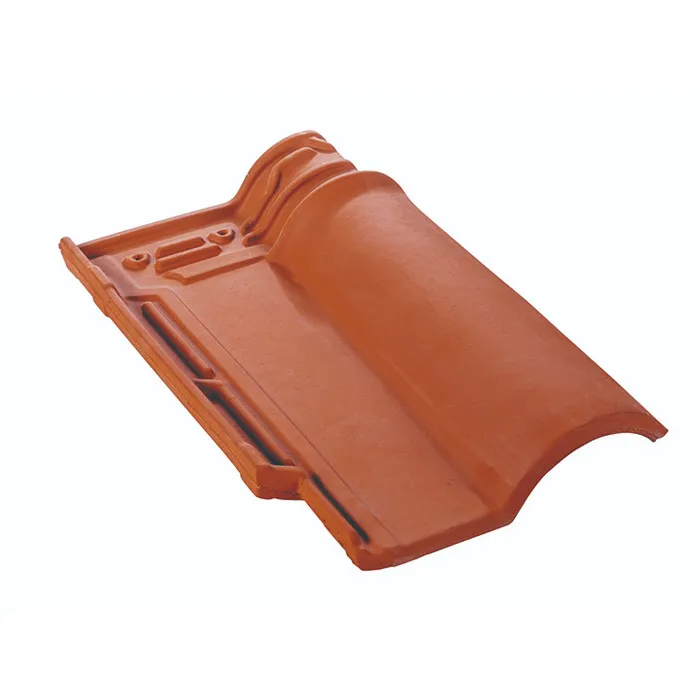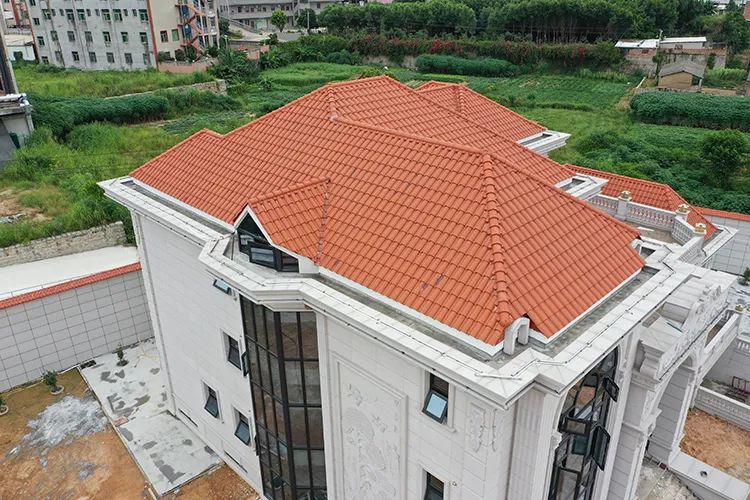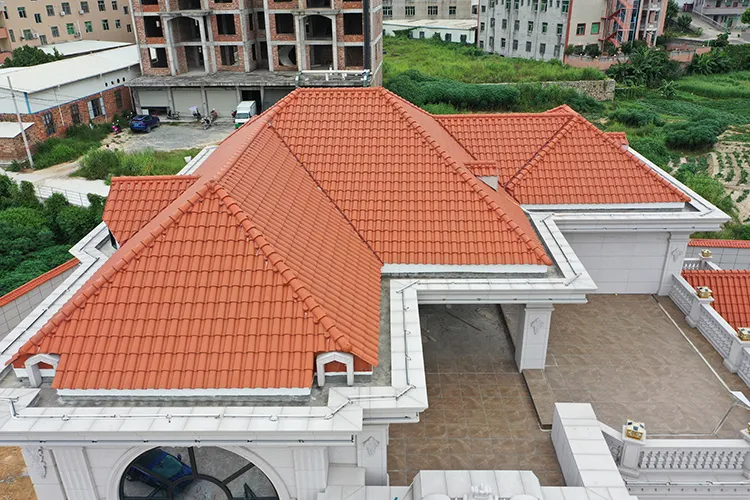Roman Clay Roof Tile is a traditional and elegant roofing material that is renowned in the construction industry for its unique design and excellent functionality. Not only are these tiles aesthetically impressive, they are also widely used in a variety of building types due to their durability and adaptability.
This article will examine in detail the historical background, manufacturing process, design features, installation methods, and applications of Roman clay roof tiles in modern architecture.

What are Roman Clay Roof Tiles?
Roman clay roof tiles are roof tiles made of high-quality clay and have a typical Roman style. Its most notable feature is the curved design, which usually consists of two parts: a concave bottom tile and a convex cover tile. This design is not only beautiful, but also effectively waterproof and wind-resistant.
Curved design:
The curved design of Roman clay tiles gives their surface an elegant curve. This design not only adds visual beauty, but also effectively guides the flow of rainwater and prevents rainwater from accumulating on the tiles, thereby improving the waterproof performance of the roof.
Material selection:
Roman clay tiles are made of high-quality natural clay and fired at high temperatures. The high density of clay and the ceramic texture formed during the firing process give the tiles high hardness and weather resistance, making them resistant to wind, rain, and extreme weather conditions.
Historical background of Roman clay roof tiles
Origin and development:
Roman clay tiles date back to ancient Rome. At the time, architects in the Roman Empire developed the tiles to solve roof waterproofing and durability problems. The design of Roman clay tiles is inspired by shapes in nature, which is constantly improved and perfected to eventually form a unique style. This kind of tile was widely used in ancient Roman architecture, and Roman clay tiles can still be seen on its ruins today, proving its excellent durability.
Cultural impact:
Roman clay tiles were not only widely used in ancient Rome, but also influenced later European architectural styles. With the expansion of the Roman Empire, the use of this tile also spread to many countries in Europe and became an important part of traditional architecture in the Mediterranean region. Today, Roman clay tiles remain one of the materials of choice for many classic buildings and modern homes.
How are Roman clay roof tiles made?
Raw materials:
Roman clay tiles are mainly made of high-quality clay. This clay is rich in minerals and is able to form a strong structure during the high-temperature firing process. The choice of raw materials is crucial, only high-quality clay will produce durable, weather-resistant tiles.
Production process:
The process of making Roman clay tiles included the steps of collecting the clay, shaping it, drying it and firing it. First, the collected clay is screened and cleaned to remove impurities. Next, molds are used to shape the clay into the shape of the tiles, which are then allowed to dry naturally or in the kiln. Finally, the dried tiles are placed in a kiln and fired at high temperatures to form a strong final product. The control of firing temperature and time is very important, as it directly affects the quality and performance of the tiles.
Surface treatment:
Roman clay tiles were often surface treated after firing in order to enhance the tile's aesthetics and functionality. This includes glazing or coating treatments, which can not only increase the waterproofness and stain resistance of the tiles, but also give the tiles a variety of colors and textures to meet the needs of different architectural styles.

What are the design features of Roman Clay roof tiles?
Unique shape:
Roman clay tiles have a unique shape, usually wavy or barrel-shaped. This design is not only visually aesthetic, but also improves the drainage and wind resistance of the tiles. Corrugated tiles can better guide rainwater to the eaves, reducing the risk of water accumulation and leakage.
Various colors and textures:
Roman clay tiles come in a variety of colors and textures, allowing you to choose based on architectural style and personal preference. Common colors include natural reds, browns, and grays that blend well into the natural environment. Surface texture treatments such as glazing, frosting and polishing further enhance the decorative effect of the tiles.
Good adaptability
Roman clay tiles are suitable for a variety of roof shapes and slopes. Whether you have a steep or gentle roof, this tile provides good coverage. In addition, Roman clay tiles can be used with other building materials such as stone, wood and metal to form a unique architectural style.
How to install Roman Clay roof tiles?
Installation preparation:
Before installing Roman clay tiles, adequate preparation is required. This starts with inspection and repair of the roof structure to ensure it can withstand the weight and forces of the shingles. Next, a waterproof layer and a ventilation layer are laid to improve the waterproofness and breathability of the roof. The waterproofing layer usually uses waterproofing membrane or asphalt felt, while the ventilation layer includes vents and insulation panels.
Tile laying:
The laying of tiles needs to be done in a specific order and method. Usually starting from the eaves, it is laid up row by row. Each tile needs to overlap a certain amount to ensure waterproof performance. Tiles are fixed using nails, hooks or clips, depending on the design of the tile and the structure of the roof.
Edge processing:
The edge parts of the roof such as ridges, eaves and gables need to be treated with special edge tiles. These edge tiles are specially designed to provide extra waterproof protection and aesthetics. During installation, special attention should be paid to the fixing and sealing of edge tiles to prevent moisture from penetrating.

What are the advantages of Roman clay tiles?
Durability:
Roman clay tiles are extremely durable. The high-quality clay material and high-temperature firing process make it resistant to erosion from various natural environments, including wind, rain, snow and ultraviolet rays. Under normal circumstances, the service life of Roman clay tiles can reach decades or even hundreds of years.
Fire performance:
Clay tiles have natural fire-retardant properties and can effectively resist the threat of fire. This has important implications for improving building safety, especially in fire-prone areas.
Environmental protection:
Roman clay tiles are an environmentally friendly material. The natural clay and high-temperature firing process used in its production process will not produce harmful substances. At the same time, clay tiles have a long service life, reducing the environmental burden caused by replacing and discarding tiles.
Aesthetics:
The aesthetics of Roman clay tiles is one of the important reasons for their popularity. Its unique design, diverse colors and textures enable it to match various architectural styles and enhance the overall beauty of the building.

